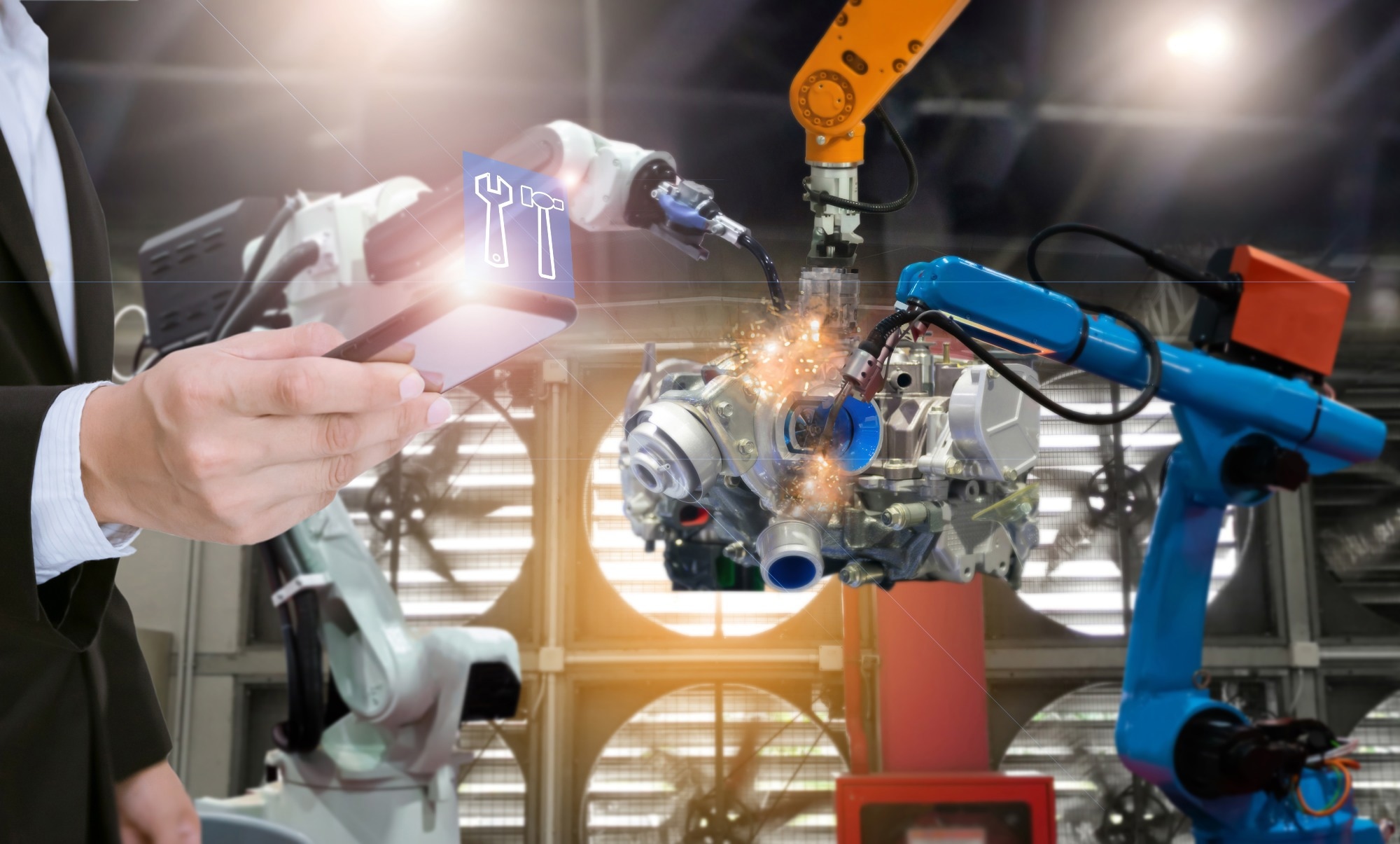In an article published in the journal Scientific Reports, researchers from the University of Birmingham, UK, developed an innovative method for detecting three-dimensional (3D) edges in depth maps using unsupervised learning and clustering.
 Study: Revolutionizing 3D Edge Detection with Unsupervised Learning. Image credit: kung_tom/Shutterstock
Study: Revolutionizing 3D Edge Detection with Unsupervised Learning. Image credit: kung_tom/Shutterstock
Background
Unsupervised learning is a machine learning approach where an algorithm is trained using unlabeled data without explicit instructions. Unlike supervised learning, which relies on labeled data (input-output pairs) for training, unsupervised learning autonomously discovers patterns, structures, or relationships within the data. It can perform tasks such as clustering, dimensionality reduction, and generative modeling.
Clustering algorithms group similar data points, dimensionality reduction techniques simplify complex datasets, and generative models aim to comprehend the underlying structure of the data. This method proves particularly valuable for exploring and unveiling hidden patterns in extensive datasets.
3D edge features are crucial for various computer vision and robotics applications, such as object recognition, tracking, segmentation, and grasping. They not only define the boundaries between different objects or surfaces in a 3D scene but also hold valuable geometric information essential for accurate analysis. However, extracting these features from noisy and incomplete real-world depth data captured by 3D sensors is challenging.
Most of the existing methods for 3D edge detection are either based on hand-crafted features or supervised learning, which require extensive parameter tuning or fully labeled datasets, respectively. Hence, these techniques are challenging for practical applications. This highlights the need for an alternative approach based on unsupervised learning to address these limitations and enhance the effectiveness of 3D edge detection in diverse and complex scenarios.
About the Research
In the present paper, the authors introduced an innovative 3D edge detection technique using unsupervised classification. The methodology employs an encoder-decoder network to learn key features from depth maps at three scales, facilitating the extraction of edge-specific features. These features are then clustered using the k-means clustering technique to differentiate each point as an edge or not. The newly proposed method offers the following advantages:
- No need for labeled data: Unlike many existing approaches that require supervised training with extensive labeled data, the suggested method does not require any labeled training data.
- Automatic parameter selection: It eliminates the requirement of manual fine-tuning of hyper-parameters and autonomously selects threshold values for effective edge classification.
- Competitive performance: It achieves competitive performance when compared with state-of-the-art edge detection methods.
- Robustness: This method is versatile and robust to noise and can detect edges at distinct levels.
The study used the following datasets for evaluating the performance of the novel technique:
- Tejani et al: Contains depth maps of various household objects, synthetically generated and noise-free.
- T-LESS: Features real-world data of industrial objects from depth sensors, including single and multi-object scenes.
- PartNet: Offers point clouds of various indoor objects with part-level annotations and semantic segmentation.
- NYU: Includes depth maps of indoor room scenes with multiple occluded objects.
- MvTech-ITODD: Comprises real-world multi-object depth maps of industrial objects captured with a depth sensor.
Research Findings
The outcomes showed that the proposed method achieved remarkable performance, despite not using labeled data or depending on tuning of key parameters. The authors assessed the novel technique across five benchmark datasets featuring single and multi-object scenes. The evaluation included a comparison with four detection methods, namely feature-based methods, learning-based methods, unsupervised learning, and clustering techniques.
The study suggested that the new model can be used for various applications that require 3D edge features. Following are some areas where this technological advancement could be significantly impactful:
- Robotics and automation: Precise 3D edge detection is crucial for a variety of tasks, including object grasping, navigation, and obstacle avoidance. Robots equipped with this technology can better understand their environment and interact with objects.
- Augmented reality (AR) and virtual reality (VR): For AR and VR systems to blend digital content with the real world, they must understand the spatial geometry of the environment. Accurate detection of 3D edges allows immersive and interactive experiences by correctly placing digital objects in 3D space.
- Medical imaging: Edge detection can assist in the segmentation of MRI or CT scans. This can aid in the identification of tumors and other pathologies.
- Automotive industry: Advanced driver-assistance systems (ADAS) and autonomous vehicles rely on the accurate perception of the vehicle's surroundings for safe navigation. The novel method could enhance the vehicle's ability to detect lane boundaries, pedestrians, and other critical objects in 3D space.
- Architecture and construction: In the construction industry, 3D modeling and surveying processes can benefit from improved edge detection in depth maps. This technology can facilitate the creation of more accurate 3D models for building information modeling systems.
- Manufacturing: For quality control and inspection, the precise detection of edges on manufactured parts can be used to identify defects or inconsistencies in products.
Conclusion
In summary, this robust and efficient method seamlessly utilizes unsupervised learning techniques to detect 3D edge features from depth maps without using any pre-labeled data. This marked a significant step forward in computer vision and had the potential to revolutionize how machines perceive and interact with their 3D environments. The paper demonstrated the comparable performance of the novel method over existing techniques.
The researchers acknowledged the limitations of their approach and suggested directions for future work, such as integrating semantic segmentation with edge detection to improve edge extraction in complex scenes and incorporating additional features like color or texture to differentiate between similar objects.